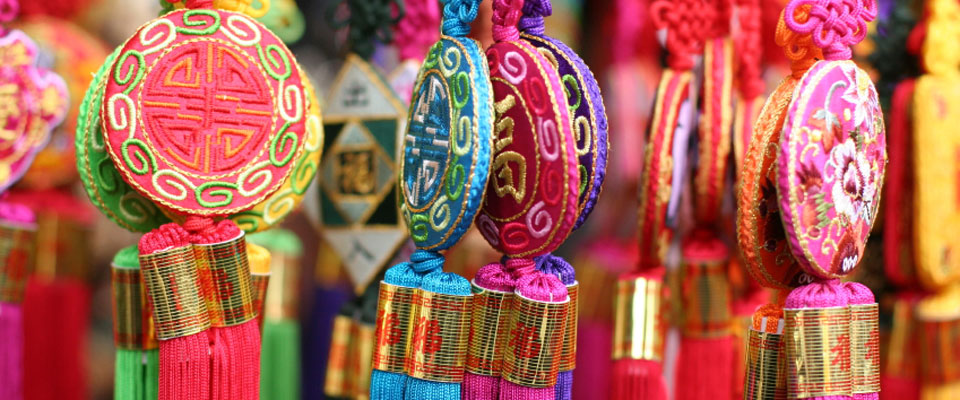
The indigenous people of the Amazon are no stranger to superstition. From our 'sophisticated' armchairs, we smirk at the thought. That is, until we realise that the very best (and almost certainly most ambitious) athletes are little better. Examples are mostly well-known: Canadian hurdler Angela Whyte never carries her podium clothes with her to the track at international competitions for fear of it jinxing her performance. Lawn bowler David Mathie plays with the price tag still attached to his right shoe, whereas his colleague Erin Marie Roth carries a poker chip with her when playing internationally. Gymnast Catherine Dion always tightens her right grip before her left on the bars; Serena Williams doesn't changes her socks when on a winning streak in a tennis tournament. Chicago Cubs relief pitcher Turk Wendell would chew four pieces of black licorice when pitching and brush his teeth between each inning while carefully avoiding base lines. Dallas Maverick's Jason Terry tries to sleep in a pair of uniform shorts that belong to next day's opponents, whereas Lance Armstrong puts his faith in a Texas pendant. Former Oakland A's Jason Giambi would wear a golden thong if he found himself in a slump at the plate, while Moises Alou, when concerned about losing his touch with the bat, was known to pee on his hands. Karate champion Lyoto Machida prefers to drink his.
If this seems mildly amusing, just remember that many of us are really no more resistant to such illusions in everyday life. As Spyros Makridakis, Robin Hogarth and Anil Gaba point out in Dance with Chance, 28 per cent of Americans believe in astrology, 15 per cent read their horoscopes every day or 'quite often', while 70 per cent of students claim good luck charms help them perform better academically. Many Chinese believe the colour red will bring happiness, wealth, fame and good luck, as does the number eight: Taiwanese will pay more for a packet containing eight than 10 tennis balls. Italians omit the number 13 from their national lottery; while more than 80 per cent of high-rise buildings around the world lack a 13th floor. Likewise, airports typically omit a 13th gate and airplanes the 13th aisle, while hospitals and hotels have often done away with room number 13. People often avoid walking under a ladder, breaking a mirror, placing a hat on a bed, scheduling an important event on Friday the 13th, holding their breath when passing a cemetery, or knocking on wood to avoid 'bad luck'. We throw salt over our left shoulder, wish each other 'good luck' except of course in theatres where you 'break a leg' instead and never name Shakespeare's 'Scottish Play', never wear blue onstage unless combined with silver, never have a mirror or three lit candles on stage, never use peacock feathers or whistle. You are encouraged, on the other hand, to keep a light burning in an empty theatre to ward off ghosts, and to present the play's director with a bouquet of flowers stolen from a cemetery on closing night. Some people refuse to shave on Monday, do laundry, pay back loans or bills on New Year's Day, wash their hair on Tuesday or buy oil on Saturday, clip nails at night or sweep the floor after sunset.
What may well account for the persistence of superstition in sports is the illusion of control it provides. Anthropologist Bronisław Malinowski, best known for having done the dirty on his discipline with a revealing diary of life with the Western Argonauts, as early as 1927 documented superstitious behaviours among athletes. He noted that they are prominent wherever elements of chance might play a role, however minor, and when injuries can end otherwise promising careers. Superstition, he reasoned, helps reduce performance anxiety and, in so doing, enhances focus and the chances of success. The end justifies the means.
Buhrmann and Zaugg's study of 310 competitive high school basketball players found females to be more superstitious than males, and superstition to be strongly correlated to church attendance. A survey of 59 varsity and intramural ice hockey players, published that same year, concluded that the higher the competitive level and (ironically) the more experienced, the greater the prevalence of superstition regardless of gender. A 1991 laboratory experiment at Springfield College, Massachusetts, hypothesised that superstitions are most likely to develop among people who believe that they can exert some control over chance outcomes. 37 participants were asked to complete a survey, designed as a measure of belief in their control over chance events, before being handed a golf club and asked to attempt 50 putts on a piece of artificial turf. Participants were deemed superstitious when continuing to select the same colour ball they had previously successfully putted. Combining the survey results with the putting behaviour suggested that those participants who believed their actions to control chance events were also the most likely to use a 'lucky ball' after a successful putt.
An earlier investigation of superstition among 174 members of intercollegiate athletic teams at the University of Western Ontario during the 1971/2 academic year by Jane Gregory and Brian Petrie found superstitions were prevalent not just among individual athletes but within teams. Many of these related to equipment use, the order in which they entered the arena or their playing position. Individuals, by contrast, relied more heavily on the use of charms and lucky numbers or, as is still often seen nowadays, on crossing themselves before entering the pitch. Superstitions also seemed to vary by sport. Thus, hockey players cared about equipment, order and player position, basketball teams about sinking the last warm-up shot, and swimmers about the colour of their suit. Lane numbers mattered to track athletes and a particular brand of ball to tennis players. Celtic's guard Ray Allen abides by a strict pre-game routine: a nap from 11:30 to 13:00, chicken and white rice for lunch at 14:30, a stretch in the gym at 15:45, a quick head shave, and then practice shots at 16:30. Pre-game ritual need not be superstitious of course: what lane you are in matters in terms of who, and how many, are running, swimming or rowing alongside you, the preferred lanes usually being the middle ones. Sinking that last shot may provide the necessary confidence needed to enter an uncertain game. Rituals, as opposed to superstitions, focus attention and trigger well-learned motor sequences and may help create a positive mindset while taking the edge of what can often seem nerve-wracking experiences.
If there are reasons for the persistence of superstition, what are its consequences? So what if Tiger Woods wears a red shirt on tournament Sundays so long as it helps him up his game? University of Cologne's Lysann Damisch and colleagues have begun to unravel the performance benefits of superstition by identifying its underlying psychological mechanisms in a series of four experiments. The first of these is similar to the Springfield trial in requiring 28 university students to putt a golf ball. Pretests indicated that 80 per cent of them believed in good luck, and so as to exploit this some of the students were told that the ball they'd just been handed had 'been lucky so far'. As predicted, students who believed they had been handed an ostensibly lucky ball did significantly better than the control group. Their second experiment involved 51 female students in engaged in a motor-dexterity exercise. Given a plastic cube with 36 balls, they were required to feed these balls as quickly as possible through one of 36 holes in a fixed slab. The difference was that some of these students were explicitly told that the umpire was keeping her fingers crossed, whereas the control group was not. As in the previous experiment activating superstition influenced performance, meaning that those told that someone was keeping their fingers crossed were quicker at completing the task.
To find out why it is that superstition 'works', Damisch performed a set of experiments that involved memory tests and puzzles. In the first of these, 41 students were asked to bring a lucky charm along. Upon arrival, they were asked questions about their lucky charm before taking it away to be photographed. The researcher returned their lucky charm to some but not others before providing them with a short questionnaire and instructions for a memory task. The questionnaire asked all volunteers to rate their self-efficacy (how confident they were at being able to perform the task) and level of anxiety. It should no longer surprise anyone that participants who had had their lucky charm returned to them performed significantly better than those who had not. But in pre-empting the exercise with a survey, Damisch was able to get a handle on the psychological state associated with superstition and performance. Those equipped with their lucky charm had reported a higher level of self-efficacy than those without, suggesting that lucky charms 'work' because they elevate self-belief.
The final experiment was designed to refine their understanding of self-efficacy's role by differentiating between it allowing individuals to set higher goals, or to persevere for longer with difficult tasks. Prior research had shown both to be related to self-efficacy. The experiment asked 31 newly selected students to form as many words as possible from a random list of eight letters. Those armed with lucky charms felt confident they would come up with a higher number and also spent longer looking for words before throwing in the towel.
Thus, whether operating in teams or as individuals, in athletics or everyday life, superstition 'works'. Provided, of course, one takes none of the above to heart. For it is the belief in the powers of the item in play, rather than an educated appreciation of the brain's ability to self-deceive, that provides the X factor. As Piercarlo Valdesolo writes in Scientific American, the "I can do this" feeling will wither away as soon as one realises that nothing mystical will influence one's performance. The science of the mind will have stripped superstition of its powers.
P.s. Seeing the premium placed on level-headedness in commercial life one might expect superstition to be much less prevalent. It may come as a surprise then to learn that nine per cent of Americans avoid making significant purchases on Friday the 13th (resulting in an estimated $800 to $900 million in 'lost' business). Or that investors take their cue from whether a NFL or AFL team win the Super Bowl. Or even that stock market behaviour is shaped by solar and lunar eclipses. Yet this is precisely what seems to be happening. Copenhagen Business School's Gabriele Lepori studied the effects of 362 eclipses visible anywhere in the world between 1928 and 2008, and seen by the superstitious as bad omen, by matching them against four American stock indices: the Dow Jones Industrial Average, the S&P 500, the New York Stock Exchange Composite, and the Dow Jones Composite Average. By computing average daily returns for each index, and by comparing returns on days when eclipses occurred with those on days when they did not, Lepori discovered a small but persistent set of effects. Eclipses not only correlate with lower than average US stock returns, but this effect is amplified during periods of economic uncertainty. It is also augmented when eclipses have attracted disproportionate attention by the press. The latter are of course consistent with superstitious behaviour among athletes: the more uncertainty, and the better aware of this uncertainty, the more prevalent the irrational. The link with superstition is supported by Lepori's observation that eclipses are associated with trading volumes and that slumps in returns are reversed in the days following an eclipse. Given that eclipses are perfectly predictable, such behaviour would seem inconsistent with the Efficient Market Hypothesis, or the idea that markets are efficient in reflecting publicly available information and leave little scope for arbitrage. His own calculations suggest that, assuming zero transaction costs, investors who sold shares before each eclipse between 1928 and 2008, only to buy them back shortly after, would have multiplied their principal 55 times (compared to 37 times by merely holding on to their stocks). Shrewd investors will of course have caught on and recognised the arbitrage opportunity provided by superstition meaning that, here too, the mind saps superstition of its magic.

















